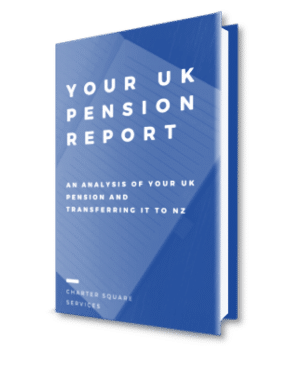The schedule method seeks to levy tax on your pension transfer based on how long you have been in New Zealand since you accrued your UK pension. The longer you have been in New Zealand the greater the portion of the transfer will need to be declared as taxable income and put in your tax return.
So, while the concept is simple the practice of calculating what portion of your pension transfer you need to declare is a little more complicated. But if you follow these basic steps you should be fine.
Step 1: Work out your relevant date of arrival
The date you arrived in New Zealand is the date that you came to New Zealand to reside after having accrued your UK pension. So if you arrived to live in New Zealand on 2 July 2007, this is your relevant date of arrival.
Step 2: Convert this to a month end date
Take your relevant date of arrival and then convert it to a month end date. So, for the purpose of the schedule method calculations going forward, if you arrived on 2 July 2007, this date effectively becomes 30 July 2007.
Step 3: Jump forward four years from the month end date
You get a four year tax free window to transfer your pension to New Zealand. So add four years to your month end date, in the above example this would mean the tax free window would expire on 30 July 2011.
Step 4: Determine whether you are inside the cut-off
If your transfer arrives within that four year window then you have no tax to pay. Note: the funds need to arrive in New Zealand by that cut-off date for there to be no tax.
Step 5: Counting the tax years (an example) for the Schedule method
If your pension transfer occurred outside the cut-off date count the number of tax years that have started since that date. So in the above example since 30 July 2011 there have been four tax years start (as at 31 October 2015), these are:
- 1 April 2012
- 1 April 2013
- 1 April 2014
- 1 April 2015
Therefore, in the example the number of tax years to be considered under the schedule method is four. Now look up the table below to determine the percentage (inclusion rate) of your pension transfer that you need to declare as income in your tax return in the tax year it arrived under the schedule method.
| Tax Years | Inclusion rate | Tax Years | Inclusion rate | Tax Years | Inclusion rate |
| 1 | 4.76% | 10 | 44.39% | 19 | 78.75% |
| 2 | 9.45% | 11 | 48.45% | 20 | 82.28% |
| 3 | 14.06% | 12 | 52.45% | 21 | 85.74% |
| 4 | 18.60% | 13 | 56.39% | 22 | 89.16% |
| 5 | 23.07% | 14 | 60.27% | 23 | 92.58% |
| 6 | 27.47% | 15 | 64.08% | 24 | 95.83% |
| 7 | 31.80% | 16 | 67.84% | 25 | 99.08% |
| 8 | 36.06% | 17 | 71.53% | 26 | 100.00% |
| 9 | 40.26% | 18 | 75.17% |
Remember, this is not your final bill but rather the amount of income that you have to return in your tax return – you will then pay tax on this income.
So working through the previous example, if the transferred funds arrived on 31 October 2015 and were $100,000. Then the transferee would be responsible for declaring $18,600 as income in their tax return. This is because four tax years had started hence the inclusion rate is 18.60%. And 18.60% multiplied by $100,000 is $18,600 of income.
Assuming that the individual is a high rate tax payer (at 33%) then this would yield a tax bill of $18,600 (income) x 33% (tax rate) = $6,138 (tax bill).



